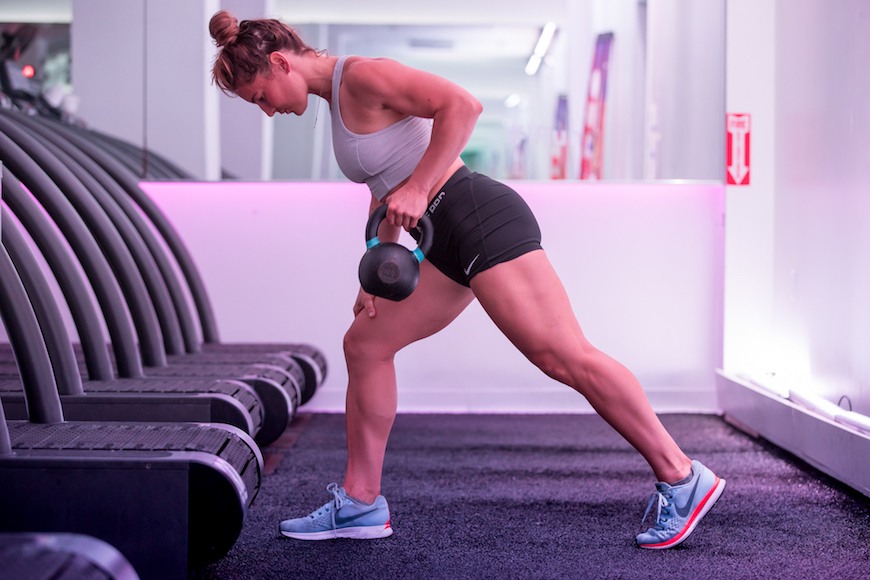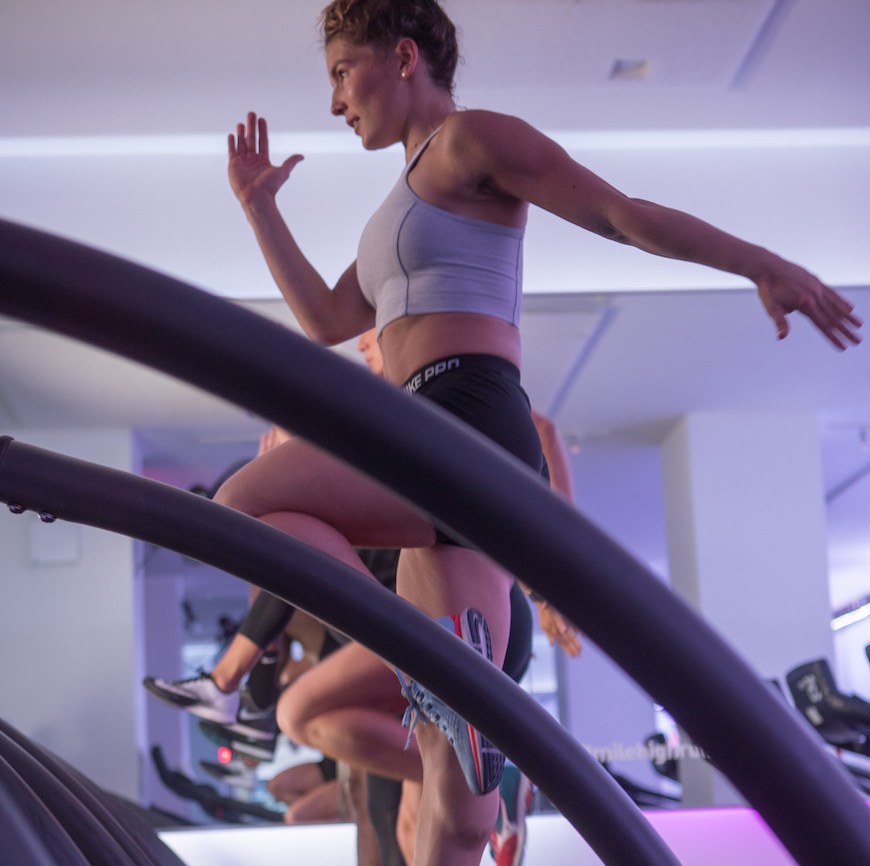I Tried Mile High Run Club’s New Strength-Training Class—Here’s What It’s Like
There are some things only runners understand: Like how powerful the simple act of putting one foot in front of the other can be when you're doing it for miles on end. Or how yes, the high is real, and it's stronger than less-than-optimal temps or the desire to go home and watch Jersey Shore. Something else a lot of runners believe: A mix of speed work and long runs is enough to keep your training game on point.
But Mile High Run Club—an indoor running studio in New York City that's a bit like SoulCycle, except, you know, with treadmills—begs to differ. It turns out, upper-body, especially core, strength does make you a better runner. Their latest offering, The Build, is a 45-minute class aimed at working the entire body. When I first heard about it, I was curious. Does this mean walking on an incline, curling three-pound weights? An extra few minutes of burpees and kettlebell moves? Well, I was about to find out.
What exactly does a strength building class for runners entail—and is it worth adding to your training regimen? Keep reading to find out.

How it's structured
The class started with a dynamic warm-up: High-knees? Check. Butt kicks? Yup. Then, the instructor, Scott Carvin, told everyone to hop on their treadmill and start jogging. After a long day, I was ready to expel my pent up energy via a good, sweaty workout. And almost right away, Carvin was putting us to work.
"You can make your speed whatever you want it to be, but increase that incline to 3.0," he said as "God's Plan" started to play. Since I was ready to run, I ambitiously put mine on 6.5. Would I regret this later? Who knows. I had no idea what to expect. Over three minutes, Carvin had us increase the incline two more times, up to 6.0. And then, he told us to hop off and hit the floor.

{{post.sponsorText}}
Right away, I was confused. Already? I was just getting into it! My heartrate went down as Carvin took a minute to explain the first set of floor moves, which included tricep extensions and rows using kettlebells. After three rounds of three moves, it was back to the treadmill—and this time the incline went up even higher, but again it was only about three minutes of work until everyone was back down on the floor grabbing weights. In all, there were three short rounds of up hill-running, but the rest of the time was spent interval strength training.
So what I'm saying runners is that this isn't a class for racking up your mile time, that's for sure. "The class is structured to be seven minutes on the treadmill total," Carvin tells me afterward. At first I was frustrated: I came to Mile High expecting to leave with a few miles under my belt and a blissful runner's high. But instead, I racked up a whopping 1.11 miles. And, really, how much is the kettlebell work making me a better runner, I wondered.
Below is what a learned about how logging fewer miles in lieu of lifting weights can actually improve your runs.

Why runners need to work their core and upper body
"When you think about your body, it's like an engine," Carvin tells me after class. "We’ve got pistons pumping. But it’s not just two pistons; you’ve got four. So if only half of your engine is working, it’s not very efficient."
Using your arms works to propel your body forward at a greater speed—I get that. But that's not the only reason why it's important. "If you're training for a race and running hours at a time, that's a long time to be pumping your arms," Debora Warner, Mile High's owner, says. "They need to be strong!"
Both say the core work is just as important, too. "All that energy coming from the ground up, gets translated through the core," Warner says. She also says that having a strong core (both your abs and your back) prevents rotation too, which is a complete waste of energy when you're running because you need to be using everything to move forward, not side-to-side.
After hearing Carvin and Warner explain exactly why runners need to cross train, I was able to understand the entire point of the class. Long runs serve a purpose. Speed work serves a purpose. Working your arms and core serves a purpose. And all of it makes you a better runner.
If you're a runner, make sure to avoid these 7 super common mistakes. And if you're feeling the post-run back pain, this move will help.
Loading More Posts...